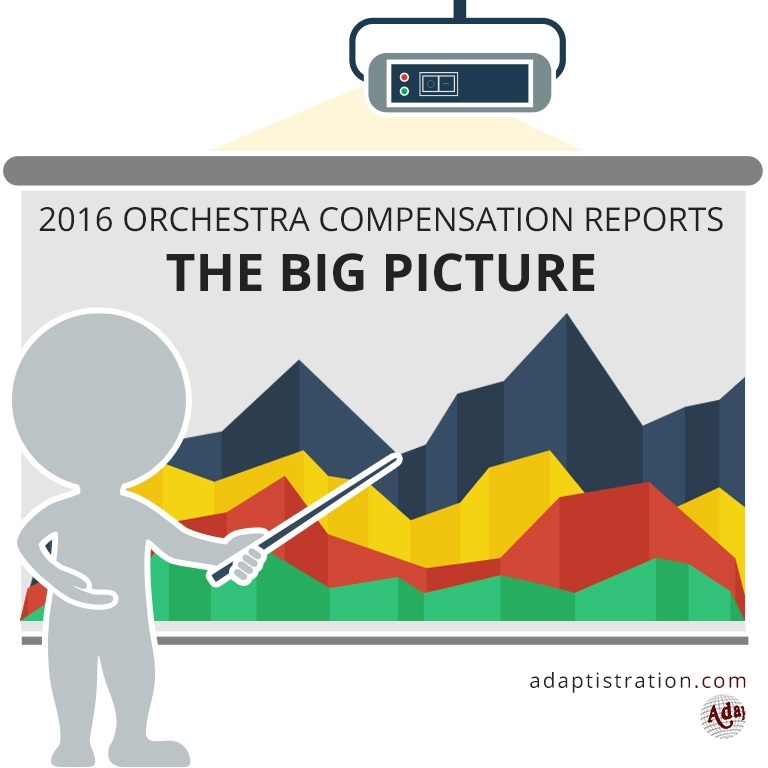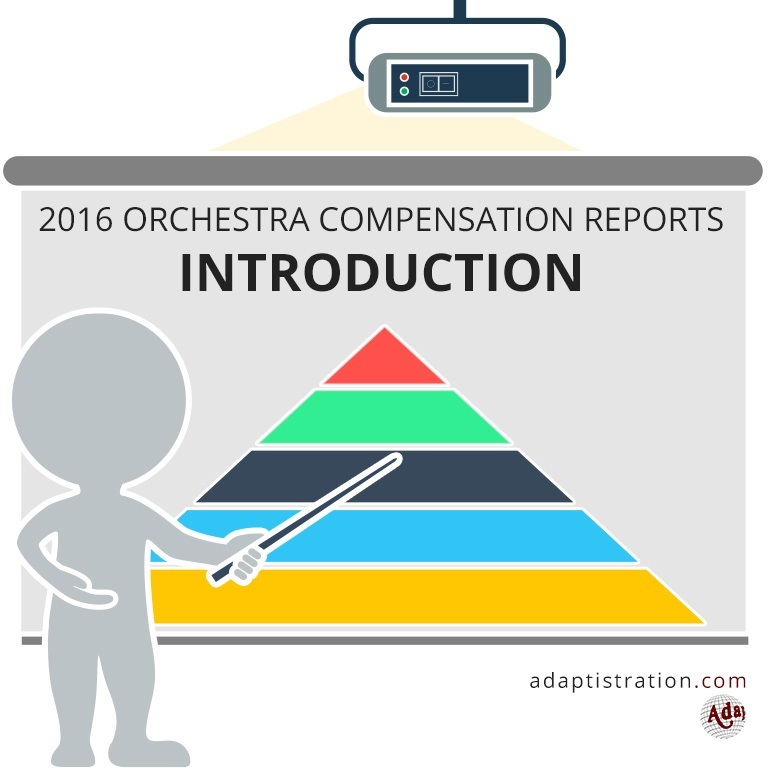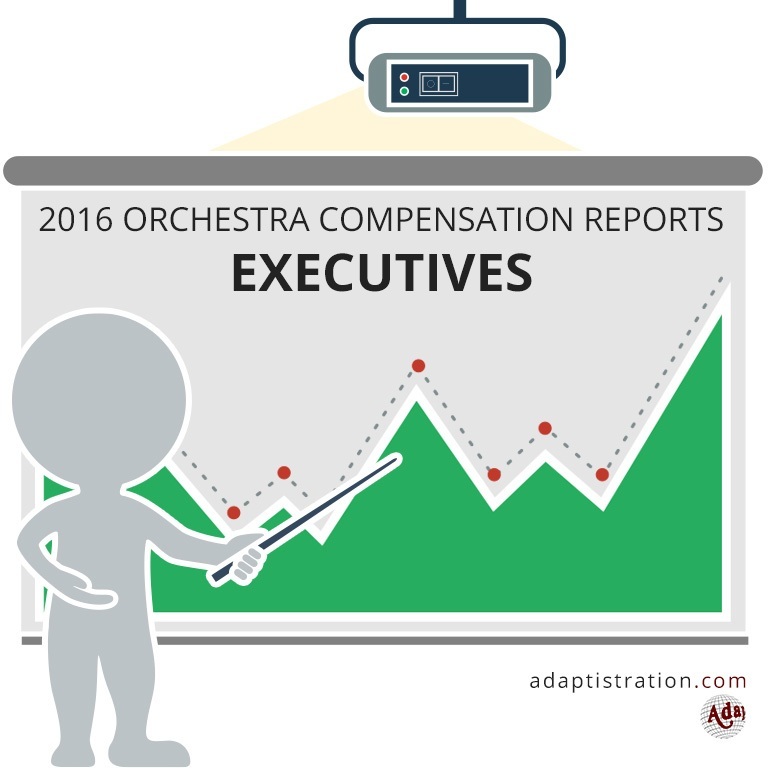New for the 2014 Orchestra Compensation Review is the Big Picture overview of all stakeholder compensation. For the past two years, this has been one of the most requested features and I’m happy to provide it as part of this year’s reports. Consequently, in order to make room for all of the data, this post has to be published in a full page layout; it’s just that big…
13 Year Trends
They don’t say a picture is worth a thousand words for nothing and to that end, the charts help illustrate how much has changed since the economic downturn. For instance, even though concertmasters experienced a smaller drop at the onset than executives or music directors, the latter two rebounded much faster.
The linear trend lines for each chart demonstrate that both executive and music directors have experienced sizable gains since the initial drop in average income at the downturn’s onset, so much so that they surpassed expected gains. At the same time, average concertmaster compensation has increased at rates below projections.

The Deliberation Continues
![]() When the compensation reports were launched back in 2005, there was a great deal of reader discussion about the value of each stakeholder group along with questions about why stakeholders didn’t share comparatively equal gains and losses from one season to the next. But over the past few years, that discussion died down, especially in the wake of the economic downturn.
When the compensation reports were launched back in 2005, there was a great deal of reader discussion about the value of each stakeholder group along with questions about why stakeholders didn’t share comparatively equal gains and losses from one season to the next. But over the past few years, that discussion died down, especially in the wake of the economic downturn.
Nonetheless, it is fascinating to see what the data begins to illuminate; for example, during the season before the economic downturn, the average executive experienced an increase of approximately 10 percent. But that gain was wiped out entirely the following season with a slightly larger average decrease.
The data clearly demonstrated that the average orchestra executive initially responded to the downturn by sharing in institutional sacrifice but that trend was very short lived and by the time the season of discontent was in full swing, executive and music director compensation increases were among the strongest over the past 13 years.
In short, the practice of compensation lost one year through shared sacrifice driven austerity seems to be made back up in very short order.
Nonetheless, it will be fascinating to see whether or not there are any changes in how boards initially set and evaluate compensation for executive and music director stakeholders. Likewise, it will be fascinating to see if some of the growing patron stakeholder movements will have any impact on these traditionally closed door discussions related to rewarding effort vs. achievement, and how much, if any, the general state of US executive culture influences compensation trends inside the orchestra field.



Is there logic or opportunism at work here?